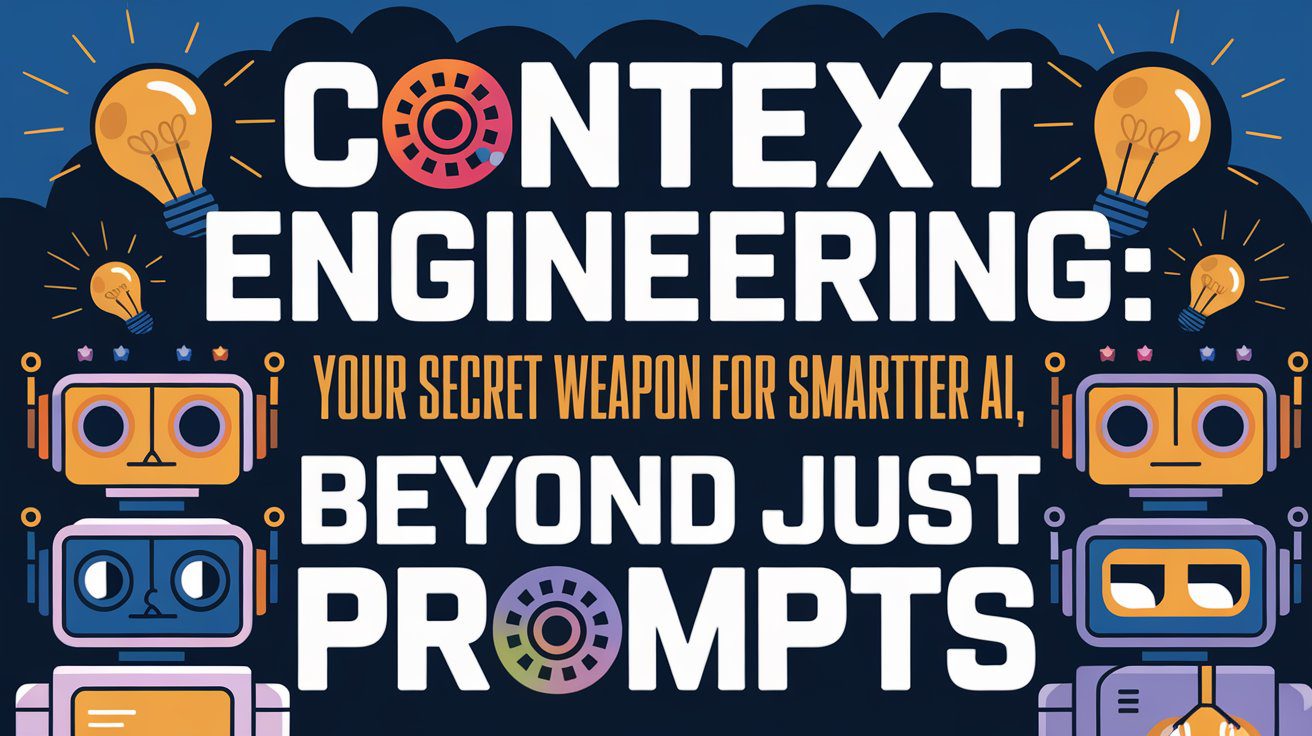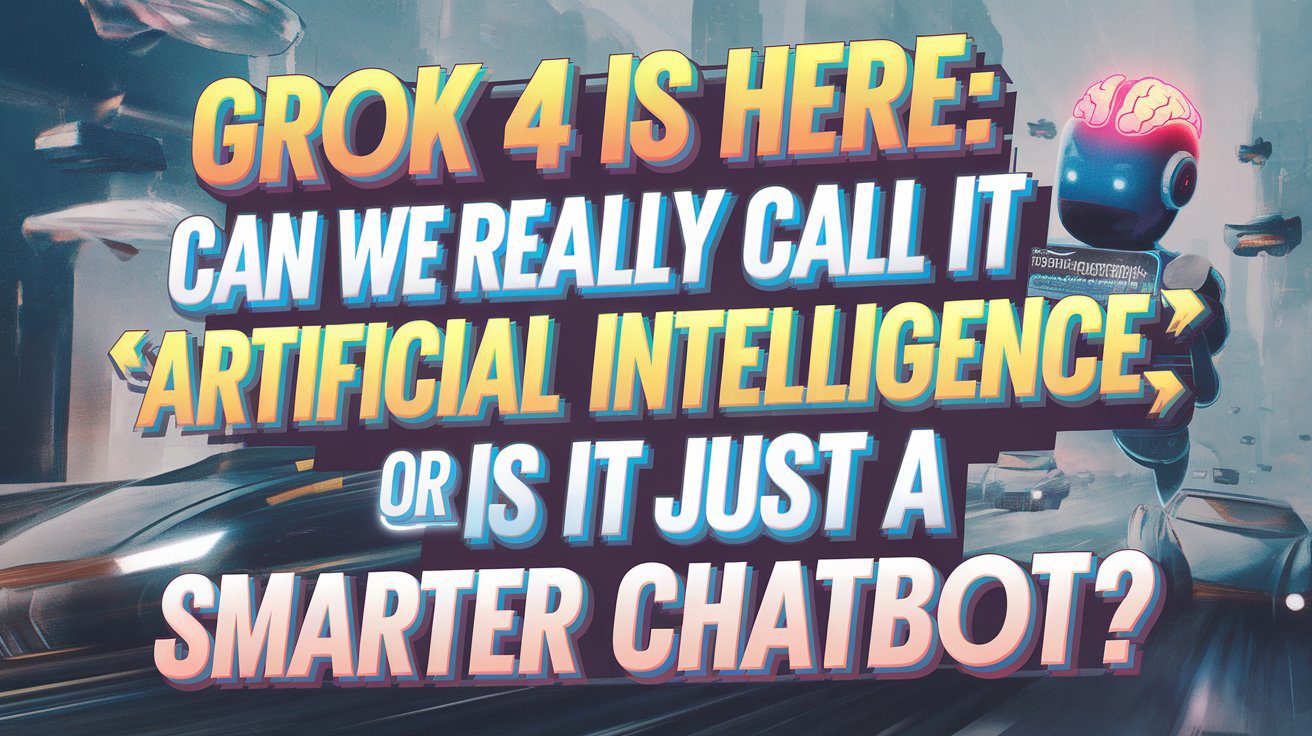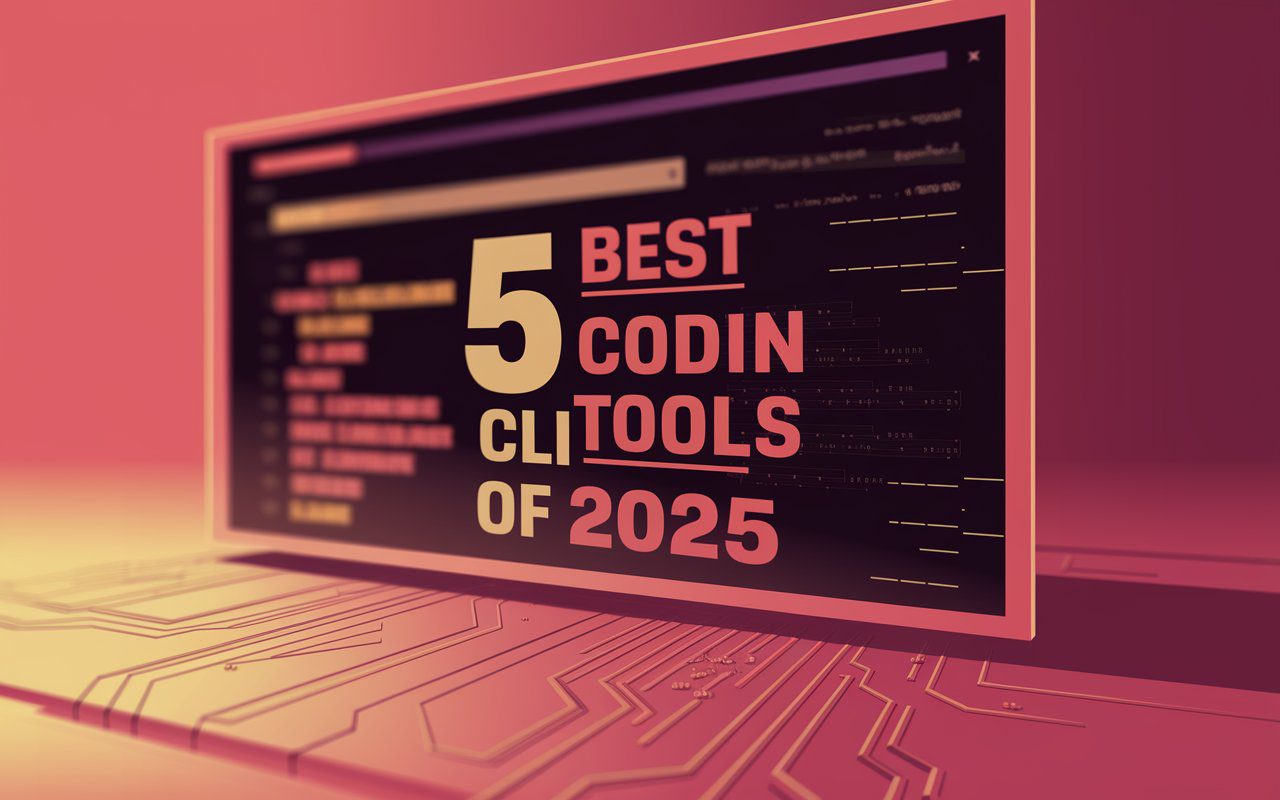Ever feel like you’re talking to a brilliant, but slightly forgetful, assistant? You ask for something, and it gives you a decent answer, but it’s not quite what you needed. Maybe it missed a crucial detail, or it didn’t quite grasp the tone you were going for. It’s a common experience these days, as AI tools become more integrated into our daily lives, from drafting emails and planning trips to brainstorming creative projects.
For a while, the buzzword was “prompt engineering” – essentially, learning how to ask the AI the “right” questions to get better results. And it’s true, crafting a good prompt can make a huge difference. But as AI systems, particularly those powering our increasingly sophisticated digital assistants and “agents,” have evolved, a new, more powerful concept has emerged. Here’s why: It’s called Context Engineering, and it’s poised to become the fundamental skill for unlocking AI’s true potential.
Think of it this way: prompt engineering is like giving a single, well-crafted instruction to someone. Context engineering, on the other hand, is like providing them with a complete briefing dossier – all the background information, their preferences, past experiences, and the tools they need to succeed. It’s about building the entire environment for the AI to operate within.
So, what exactly is this game-changing skill, and how is it different from the prompt engineering we’ve been hearing about? Let’s dive in.
What is Context Engineering?

At its heart, Context Engineering is the art and science of meticulously designing, assembling, and managing all the information that surrounds an AI model, ensuring it has precisely what it needs to perform a task effectively. Here’s why: It’s about creating the optimal “mental world” for the AI.
Imagine an AI’s context window as its working memory, its short-term focus. Just like our own brains have a limited capacity for what we can actively process at any given moment, Large Language Models (LLMs) have a finite context window. As Andrej Karpathy, a prominent figure in AI research, puts it, LLMs are like a new kind of operating system, and their context window is like the RAM. Context engineering, then, is like the operating system’s job of curating what fits into that RAM – ensuring the most relevant, useful information is available for the AI to process.
Tobi Lutke, CEO of Shopify, describes it beautifully: it’s “the art of providing all the context for the task to be plausibly solvable by the LLM.” This means going beyond a simple question; it’s about supplying the AI with the necessary background, instructions, data, and even memory of past interactions to enable it to perform its job reliably.
The Evolution: Why Prompt Engineering Isn’t Enough Anymore

You’ve probably experimented with ChatGPT, Bard, or other AI tools. You’ve learned that asking “Write a story” yields a generic result, while “Write a short, humorous story about a cat who dreams of flying, told from the cat’s perspective, similar in tone to Douglas Adams” gets you much closer to what you want. That’s prompt engineering in action. It’s about finding the right words, the right structure, and sometimes a few examples to guide the AI’s output.
And it’s been incredibly useful! Prompt engineering unlocked amazing capabilities, making AI accessible and fun for millions. It allowed us to coax impressive results from LLMs, transforming them from abstract concepts into practical tools. Here’s why: However, as of July 2025, the demands placed on AI systems have grown significantly. We’re moving beyond simple Q&A and text generation. We’re building AI agents that can perform multi-step tasks, interact with tools, remember previous conversations, and even learn from user preferences over time. Here’s why: For these more complex, dynamic applications, simply crafting a perfect prompt for each individual interaction isn’t enough.
The most capable AI models can underperform not because they’re flawed, but because they’re fed an incomplete or “half-baked” view of the world. The AI might not have access to the necessary data, might not recall a crucial piece of information from earlier in a conversation, or might not understand the specific constraints of the task. These aren’t model failures; they’re context failures. And that’s where context engineering steps in to fill the gap.
Context Engineering vs. Prompt Engineering: The Big Difference

You might want to where a lot of the confusion lies, but the distinction is crucial. Think of it as a hierarchy:
- Prompt Engineering is about crafting the specific input or query you give to the AI at that moment. It’s about the words, the phrasing, the immediate instructions. It’s like giving a single, precise command.
- Example: “Summarize this article for me.”
- Context Engineering is about building the entire information ecosystem that surrounds that prompt. It’s the broader discipline of orchestrating everything the AI has access to before it even processes your specific prompt. It’s about providing the AI with the relevant background, memory, tools, and data it needs to understand why you’re asking and how best to respond. It’s like providing a full briefing dossier, a screenplay, or the entire operational environment.
- Example: Before asking for the summary, you’ve already told the AI:
- “I’m a busy executive who needs quick insights.” (System Prompt/Persona)
- “My goal is to understand the financial implications of this article.” (Instruction/Goal)
- “Summaries should ideally be under 150 words and use bullet points.” (Formatting Preference)
- You’ve also provided the article itself, perhaps even highlighting specific sections. (Data)
- Example: Before asking for the summary, you’ve already told the AI:
Here’s a breakdown of the key differences:
| Feature | Prompt Engineering | Context Engineering |
|---|---|---|
| Focus | The specific query/instruction given to the AI. | The entire information environment surrounding the AI’s task. |
| Scope | Narrow; single interaction-focused. | Broad; system-wide, encompassing multiple interactions and data sources. |
| Goal | Get a good output for a specific request. | Ensure the AI can plausibly solve the task reliably and effectively. |
| Nature | Crafting words, phrasing, and immediate instructions. | Designing, assembling, and managing data, memory, tools, and instructions. |
| Analogy | Giving a single command; writing a sentence. | Providing a briefing dossier; writing a screenplay; building the AI’s workspace. |
| Relationship | A subset of Context Engineering. | The overarching discipline that encompasses Prompt Engineering. |
| Time Horizon | Short-term, single-turn. | Long-term, multi-turn, continuous learning. |
| Failure Cause | Poorly worded prompt. | Insufficient, irrelevant, or disorganized context; lack of memory/tools. |
Essentially, prompt engineering is what you do inside the context window. Here’s why: Context engineering is how you decide what fills that window and how it’s organized. As one expert puts it, if prompt engineering is about asking the right question, context engineering is about ensuring the AI has the right knowledge and environment to answer that question effectively.
What Actually Is Context? The Building Blocks of AI Understanding

So, what exactly goes into this “context” that we’re engineering? It’s a surprisingly rich mix of elements that help an AI understand your intent, access necessary information, and perform actions.
- Instructions / System Prompts: These are the foundational directives you give the AI. They define its persona (e.g., “You are a helpful assistant,” “You are a witty marketing copywriter”), its rules (e.g., “Always respond in bullet points,” “Do not include personal opinions”), and its overall goal for the interaction. It’s generally helpful to often set at the beginning of a session or even hardcoded into an application.
- Memory / History (Short-term & Long-term):
- Short-term Memory (Conversation History): This usually will the back-and-forth of your current conversation. The AI needs to remember what you’ve said, what it has responded with, and how the dialogue has evolved. Without this, every interaction would be like starting from scratch.
- Long-term Memory: This refers to information the AI can retain across multiple sessions or from a pre-fed knowledge base. It could include your personal preferences (e.g., “I prefer natural, conversational language,” “I’m allergic to nuts”), summaries of past projects, or specific facts you’ve told it to remember.
- Knowledge / Data: This usually will the information the AI draws upon to answer your questions or complete tasks. It can be:
- Retrieved Information: Data pulled from external sources, like documents, websites, or databases, often through techniques like Retrieval-Augmented Generation (RAG).
- Provided Data: The specific text, documents, or files you upload or paste into the AI.
- Tools: These are functionalities that AI agents can use to perform actions beyond just generating text. Here’s why: This could include:
- APIs: To search the web, check the weather, book a flight, or access other services.
- Code Interpreters: To run Python code, perform calculations, or analyze data.
- Databases: To query specific datasets. Here’s why: The AI needs to know what tools are available and how to use them (their schemas and descriptions).
- Examples (Few-Shot Learning): Sometimes, the best way to show an AI what you want is to demonstrate it. Here’s why: Providing a few examples of input-output pairs helps the AI understand the desired format, tone, or logic. For instance, if you want it to rephrase sentences, you might give it: “Rephrase this: ‘The meeting was long.’ -> ‘The meeting felt interminable.'”
Why Context Engineering Matters for You

This might sound technical, but the principles of context engineering directly impact your everyday experience with AI. By understanding and applying them, you can dramatically improve the quality, reliability, and usefulness of the AI interactions you have.
- Enhanced Reliability & Reduced Errors: When an AI has clear, complete context, it’s less likely to “hallucinate” (make up facts), provide outdated information, or get confused. Here’s why: This means more accurate answers and fewer frustrating dead ends. If you’re asking an AI to help draft a complex document, providing it with all relevant background information ensures it doesn’t miss critical details or make incorrect assumptions.
- Deeper Personalization: Context engineering allows AI to remember your preferences, your goals, and your past interactions. Imagine an AI assistant that learns your preferred writing style, knows your dietary restrictions when suggesting recipes, or understands your travel preferences for planning your next vacation. Here’s why: This makes AI feel less like a generic tool and more like a personalized assistant.
- Greater Efficiency & Faster Results: Instead of going back and forth multiple times to clarify or correct an AI, providing good context upfront means you get closer to the desired output on the first try. This saves you time and effort, making your AI interactions much more productive. If you’re using AI for creative writing, giving it character backstories and plot points upfront saves you from having to repeatedly remind it or correct its narrative.
- Handling Complex Tasks: For tasks that require multiple steps, integration with other tools, or a deep understanding of a specific domain, context engineering is essential. Whether you’re planning a multi-city trip, debugging code, or analyzing a large dataset, the AI needs a rich context to manage the complexity and orchestrate the necessary actions.
- The “Lifestyle” Advantage: For us as general users, context engineering isn’t about building complex agent architectures; it’s about becoming a better “context provider” for the AI tools we use daily. It’s about transforming our AI interactions from simple commands to collaborative dialogues.
Context Engineering in Action: Practical Tips for Everyday AI Users
You don’t need to be an AI engineer to practice context engineering. By adopting a few simple strategies in your daily AI interactions, you can significantly improve your results. Think of yourself as the AI’s personal context manager!
- Be Specific and Detailed in Your Initial Requests: Instead of a vague prompt like “Write an email,” try: “Write a professional email to my colleague, Sarah, asking for an update on the Q3 report. Mention that the deadline is Friday, and I need the key findings. Here’s why: Keep it concise and friendly.”
- Why it works: You’re providing the recipient, the topic, the key information needed, and the desired tone and length.
- Provide Background Information Upfront: If you’re asking an AI to help with creative writing, coding, or problem-solving, give it the necessary background.
- For writing: “I’m writing a fantasy novel. The main character is a reluctant wizard named Elara who accidentally summons a mischievous dragon. The tone should be lighthearted and adventurous.”
- For coding: “I’m trying to create a Python script that sorts files in a directory by date. Here’s the code I have so far: [paste code]. It’s giving me an error on line 15.”
- Why it works: You’re giving the AI the “world” it needs to operate within, rather than making it guess.
- Establish Your Preferences Early: Let the AI know your preferred output format and style.
- “I prefer answers in bullet points.”
- “Please explain this concept like I’m 10 years old.”
- “My usual writing style is formal and academic.”
- Why it works: This acts as a system prompt, guiding the AI’s behavior for the entire session.
- use Conversation History: Don’t be afraid to refer back to previous turns in your chat.
- “Following up on our earlier discussion about vacation spots, can you tell me more about the flight options to Kyoto?”
- “Based on the summary you provided earlier, what are the main risks?”
- Why it works: This explicitly reinforces the AI’s memory and helps it maintain a coherent train of thought.
- Use Examples (Few-Shot Learning): If you want a specific format or style, show the AI what you mean.
- “Here are a few examples of product descriptions I like: [Example 1: Concise, benefit-driven]. [Example 2: Playful, engaging]. Now, write a description for this new gadget: [Gadget details].”
- Why it works: It provides a clear, concrete demonstration that the AI can learn from.
- Clarify Constraints and Goals: Be explicit about what you want to achieve and any limitations.
- “I need to present this information to my boss, so it must be professional and focus on ROI.”
- “This summary needs to fit within a 280-character tweet.”
- Why it works: It helps the AI prioritize information and tailor its response to your specific needs.
By consciously providing this richer context, you’re not just “prompting” the AI; you’re engineering the conditions for its success. You’re helping it understand you, remember what’s important, and utilize its capabilities more effectively.
The Future is Contextual
The landscape of AI is shifting rapidly. While prompt engineering was a vital first step, context engineering represents the next evolutionary leap. It’s what enables AI to move from being a clever text generator to a truly intelligent, reliable, and personalized assistant or collaborator.
Whether you’re using AI for simple daily tasks or complex creative endeavors, mastering the art of providing context will be your key to unlocking better results. It’s about building dynamic systems – even if that system is just your own understanding of how to interact with the AI – that feed the model the right information, in the right format, at the right time.
As we move further into 2025 and beyond, the ability to engineer context will be what separates good AI interactions from truly exceptional ones. So, start thinking about the context you provide. Be the architect of your AI’s understanding, and watch your digital collaborations change.




